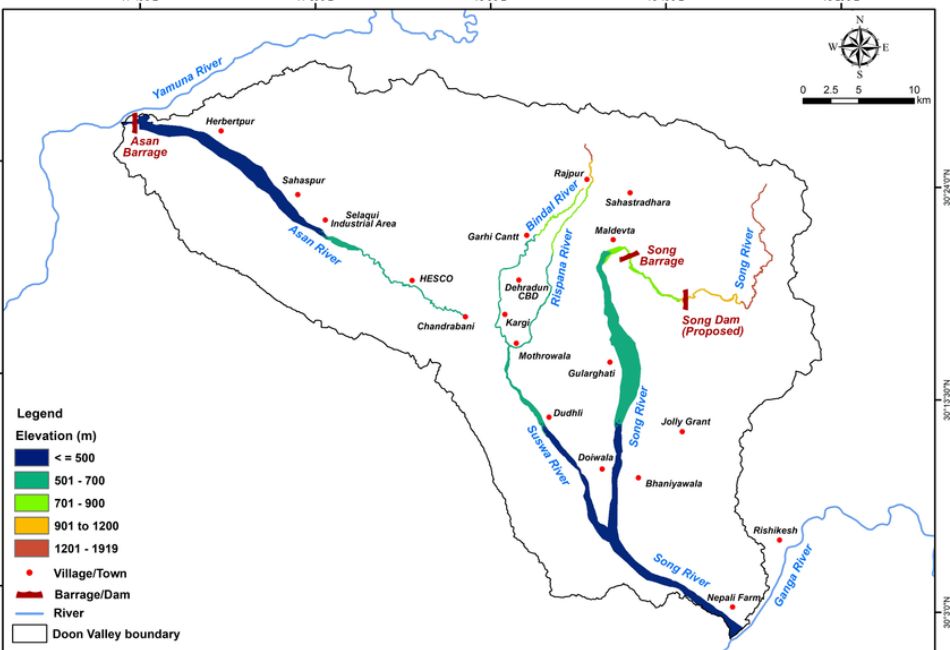NGT Seeks Report on Waste Near Asan River, Dehradun | 14 Nov 2025
Why in News?
The National Green Tribunal (NGT) has asked Dehradun Municipal Corporation to submit a progress report on the clearance of legacy waste near the Asan River, following concerns about leachate entering the river’s floodplain.
Key Points
- About Asan River:
- The Asan River, also known as the Asan or Asan Barrage stream, originates near Mussoorie and flows through the Doon Valley before meeting the Yamuna River at the Asan Conservation Reserve near the Uttarakhand – Himachal border.
- The river is fed by natural springs and hill streams and plays an important role in maintaining the groundwater table and biodiversity of western Doon.
- The construction of the Asan Barrage (1967) created a reservoir that supports irrigation, hydropower generation (via the Kulhal and Khodri powerhouses), and bird habitats.
- It forms the Asan Wetland (Asan Conservation Reserve), Uttarakhand’s first Ramsar Site (2020), a key habitat for migratory birds such as ruddy shelduck, common pochard, Eurasian coot and bar-headed geese.
- About Legacy waste:
- Legacy waste refers to decades-old accumulated waste in dumpsites/landfills, consisting of mixed municipal waste such as plastics, construction debris, organic matter, textiles, glass, metals and other inert materials. .
- These massive waste mounds cause methane emissions, frequent fires, foul odour, groundwater contamination, and vector-borne health risks.
- Scientific remediation of legacy waste involves bio-mining, bio-remediation, or bioremediation-cum-capping, which help reclaim valuable land, reduce pollution, improve urban public health, and support the environmental objectives of Swachh Bharat Mission 2.0.

